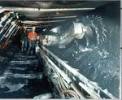
S-MINER Act's Impact on MSHA
A required report from U.S. Rep. George Miller, D-Calif. and chairman of the House Education and Labor Committee, estimates the financial impact of the Supplemental Mine Improvement and New Emergency Response Act of 2007, which his committee passed Oct. 31 by a vote of 26-18. The S-MINER Act would halve the maximum level of coal dust to which miners could legally be exposed and would require the use of tamper-proof technology to measure exposure levels. It also would add new safeguards for retreat mining, require that seals inside mines withstand pressure of 240 pounds per square inch, give MSHA subpoena authority, direct mines to begin using fire-resistant conveyor belts to carry materials to the surface, require MSHA to develop its own emergency response plan within six months, require NIOSH and MSHA to conduct random inspections of miners' self-contained self-rescuers, and create a miner ombudsman's office to handle safety complaints from miners. The bill also establishes rules for independent investigations of mining disasters and calls for better tracking and communications equipment, more reliable air supplies, and use of refuge chambers.
Miller's report, filed Nov. 16, details all of this and includes a Congressional Budget Office estimate of the financial impact: $117 million in additional spending in 2008-12 against $157 million in increased revenue from higher civil penalties. Any gains from increased penalties would go directly to the U.S. Treasury's general fund. One new cost for MSHA would be setting up and maintaining a 24-hour emergency call center; others are creating a mining map repository and posting copies of all maps online, inspecting all mine seals under construction, and completing required reports.
The National Mining Association says no additional reform to the current MINER Act is needed at this time, and that mining injuries continue to decline. In its latest electronic newsletter, NMA also says a House floor vote on the S-MINER Act is expected in December, after Congress returns from its current break.